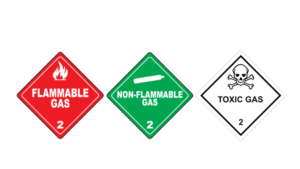Understanding the role of risk assessment in classifying hazardous areas is crucial for any industry dealing with potentially dangerous substances or environments. This process is not only a legal requirement but also a fundamental aspect of ensuring workplace safety through proper classification. In this context, the Intrinsically Safe Store plays a pivotal role by providing equipment designed to operate safely in hazardous areas. Let’s delve deeper into the importance of risk assessment and how it aids in classifying hazardous areas.
Understanding Risk Assessment
Risk assessment is a systematic process of evaluating potential risks that may be involved in a projected activity or undertaking. It involves identifying potential hazards, analyzing or evaluating the risk associated with that hazard, and determining appropriate ways to eliminate or control the hazard.
Importance of Risk Assessment in Hazardous Areas
Risk assessment plays a crucial role in hazardous areas for several reasons:
- It helps in identifying and evaluating potential hazards.
- It aids in determining the level of risk associated with each hazard.
- It assists in developing appropriate control measures to mitigate the risks.
Classifying Hazardous Areas
Classifying hazardous areas is a critical step in the risk assessment process. It involves dividing a hazardous area into zones based on the frequency and duration of the occurrence of an explosive atmosphere. The classification provides a basis for the selection of equipment to be used in those areas.

Role of Intrinsically Safe Store
The Intrinsically Safe Store plays a significant role in this context by providing intrinsically safe equipment designed to operate safely in hazardous areas. The store offers a wide range of products, including mobile phones, tablets, computers, and other devices, all designed to minimize the risk of ignition in hazardous areas.
Case Study: The Importance of Risk Assessment
A case study highlighting the importance of risk assessment in classifying hazardous areas is the Piper Alpha disaster in 1988. A gas leak led to a massive explosion, killing 167 people. The subsequent investigation revealed that the risk assessment was inadequate, and the area was not correctly classified as hazardous. This tragedy underscores the importance of proper risk assessment and classification of hazardous areas.
The Importance of Risk Assessment in Hazardous Area Classification
In conclusion, risk assessment plays a vital role in classifying hazardous areas. It helps identify potential hazards, evaluate the associated risks, and develop appropriate control measures. The Intrinsically Safe Store aids in this process by providing equipment designed to operate safely in hazardous areas. Therefore, understanding and implementing proper risk assessment is not just a legal requirement but a moral obligation to ensure workplace safety.
For more information on intrinsically safe equipment or assistance with risk assessment and classification of hazardous areas, contact us at the Intrinsically Safe Store.


